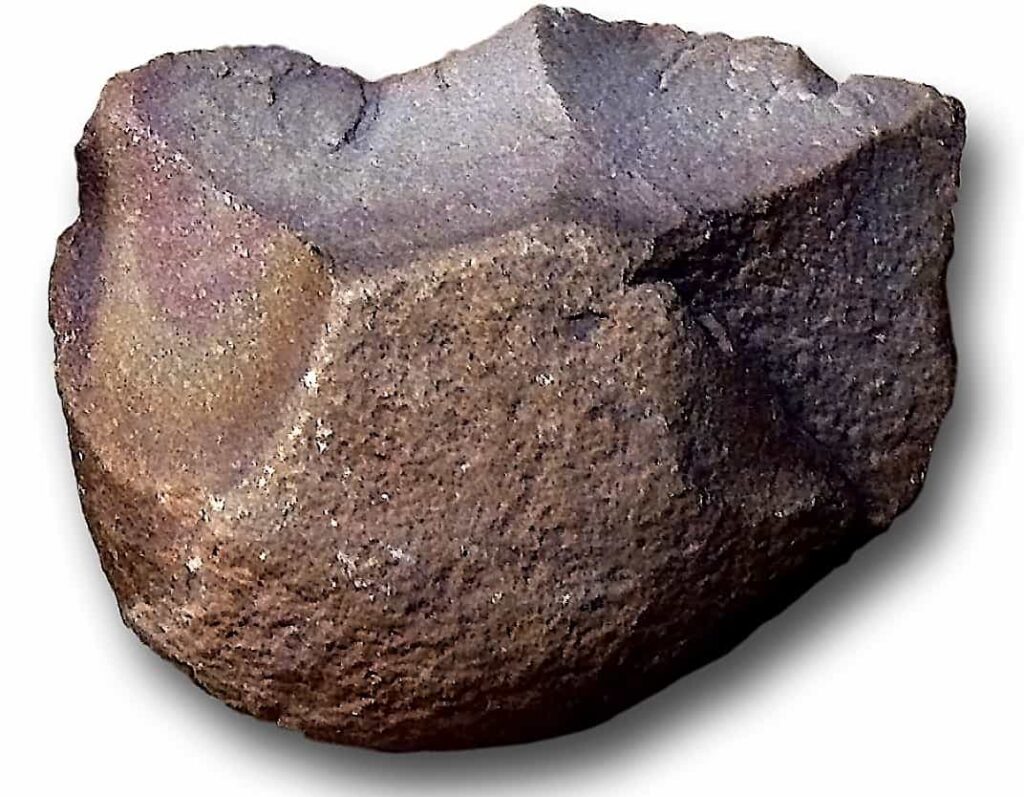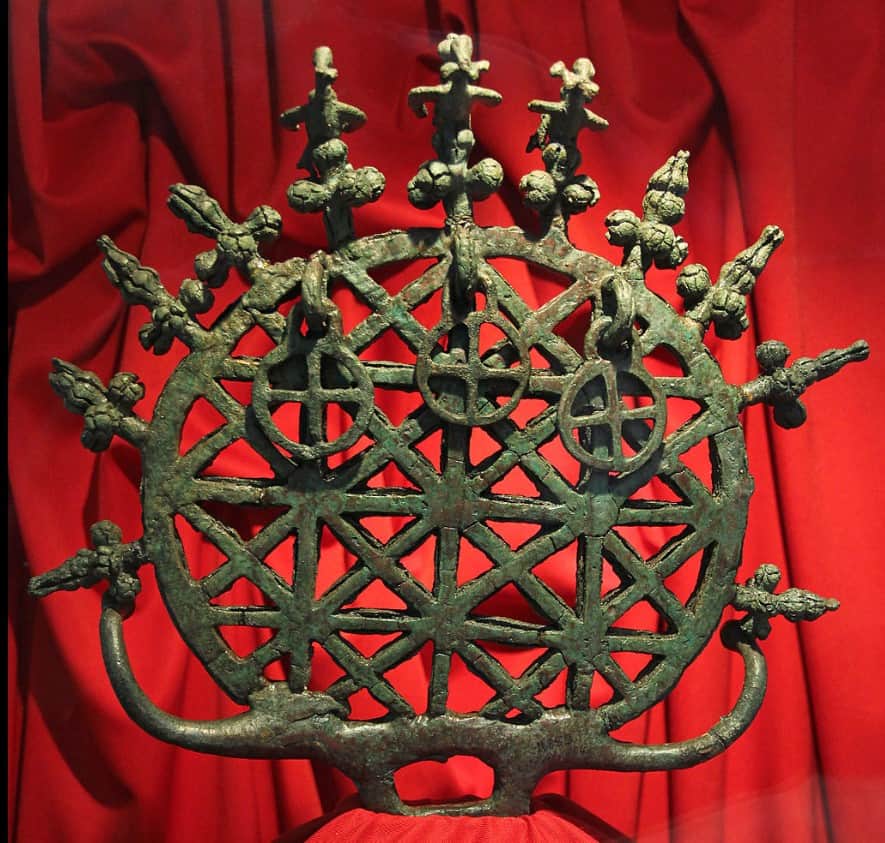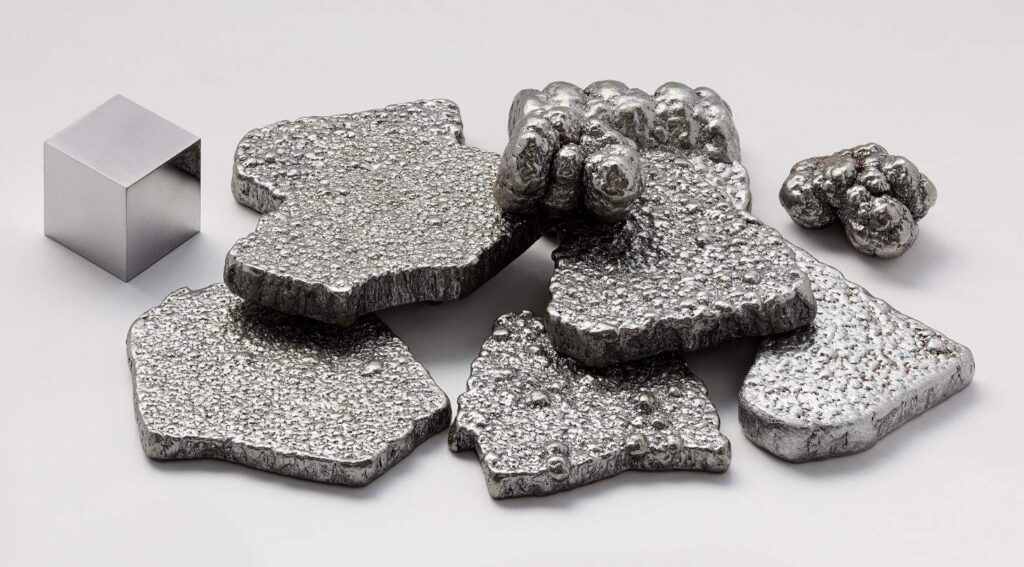Exploring the First Knife Ever Made From Stone to Steel
Throughout human history, the art of crafting tools has been critical to our ingenuity and adaptability. Among the earliest and most essential tools ever created is the knife. A symbol of our mastery over nature and a vital asset for survival, the journey from the first knife made of stone to the sophisticated blades of modern times is a remarkable example of human progress.
This article takes us on a captivating journey, tracing the evolution of the first knife ever made, from its humble beginnings as a simple stone tool to the intricately forged steel blades that we wield today.
When Was the First Knife Ever Made?
The first knife ever made dates back to the early days of humanity’s technological progress. Around 2.5 million years ago, during the Lower Paleolithic period, our ancestors began crafting rudimentary tools, including the earliest iterations of what we now recognize as a knife. These primitive knives were created using basic materials such as wood, bone, and stone, with the technique evolving over time.
As humanity’s understanding of materials and craftsmanship improved, knives transitioned from their humble beginnings in wood and stone to incorporate more durable materials like copper, bronze, iron, steel, ceramic, and titanium. The evolution of the first knife reflects the remarkable journey of human innovation, from simple stone tools to intricately designed blades that serve a multitude of purposes today.
The first knife ever made marked the inception of a tool that would play a pivotal role in shaping human civilization. It symbolizes our ability to harness the elements around us and adapt them to our needs.
The Oldowan
The Oldowan, also known as Mode I, represents a significant chapter in the evolution of tools, including the early stages of what we now recognize as knives. This widespread stone tool industry emerged during the Lower Paleolithic period, dating back around 2.9 million years ago.
The Oldowan tools are characterized by their simplicity, often crafted by chipping off one or a few flakes from a larger stone using another stone. These tools were used by ancient hominins (early humans) across Africa and marked the beginning of our ancestors’ ability to shape the environment to meet their needs.
The Oldowan era laid the foundation for the development of more sophisticated tool-making techniques. As improvements in metallurgy and manufacturing arose, knife blades transitioned from materials like wood, bone, and stone to metals like copper, bronze, iron, steel, and more.
The term “Oldowan” is derived from the archaeological site Olduvai Gorge in Tanzania, where the first Oldowan stone tools were discovered in the 1930s. These tools were predominantly simple and essential, serving a range of purposes in the daily lives of early humans. They were initially classified by their use, with categories including choppers, scrapers, and pounders.
Oldowan tools were instrumental in shaping the course of human development, enabling tasks such as hunting, food preparation, and crafting. The tools found in the Oldowan tradition provide insights into the lifestyle and technological capabilities of our ancestors during this period. While the Oldowan laid the foundation, it was succeeded by the more complex Acheulean industry, which introduced bifacially worked tools like handaxes.
When Was the First Metal Knife Made?
The Bronze Age
The Bronze Age, spanning roughly from 3300 BC to 1200 BC, was a significant epoch characterized by several distinct features that contributed to the evolution of human societies. This period marked a transition from the preceding Neolithic era and introduced numerous technological advancements and societal changes.
One of the defining characteristics of the Bronze Age was the widespread use of bronze, an alloy composed of copper and tin. The technological ability to smelt copper and tin ores, and to create bronze through their combination, revolutionized various aspects of society.
Bronze was harder and more durable than previous materials, providing a technological advantage that significantly impacted tools, weapons, and other essential items. This was also the time we began seeing the first metal knives.
The use of bronze was not evenly distributed across all regions and societies. While some cultures could produce their own bronze by smelting copper and alloying it with tin or other metals, others engaged in trade to acquire this valuable resource. This disparity in access to bronze often contributed to social hierarchies, with elites having more advanced tools and weaponry.
The Bronze Age was characterized by the development of writing systems in certain areas. Mesopotamia and Egypt stand out as early centers of practical writing systems, with cuneiform script and hieroglyphs respectively. These writing systems allowed for the recording and dissemination of information, contributing to the preservation of knowledge and the growth of complex societies.
Advanced agricultural practices became a hallmark of the Bronze Age. Cultures in the ancient Near East practiced year-round intensive agriculture, which supported growing populations and allowed for the establishment of cities and civilizations. This era saw the rise of city-states, nation-states, and empires, with centralized governments, written law codes, and organized administrative systems.
Innovation was a defining theme of the Bronze Age. The development of the potter’s wheel, architectural projects, social stratification, economic administration, and organized warfare all contributed to the growth and complexity of societies during this time. It was a period of rapid cultural and technological change, setting the stage for many of the features that would shape subsequent historical eras.
The Bronze Age reached its culmination with the Late Bronze Age collapse, a period of widespread societal disruption and economic decline during the 12th century BC. This collapse had profound effects on many Bronze Age civilizations, leading to significant changes in the geopolitical landscape and ushering in the Greek Dark Ages.
In essence, the Bronze Age was characterized by the utilization of bronze as a transformative material, the development of writing systems, intensive agricultural practices, complex governance structures, and a variety of innovative advancements that laid the foundation for the development of early urban civilizations.
The Iron Age
The Iron Age constitutes the final epoch within the three-age division of prehistory and protohistory, following the Stone Age and the Bronze Age. This era represents a significant technological advancement, characterized by the mass production of tools and weapons crafted from steel, a durable and versatile material. The Iron Age marks the pinnacle of metalworking techniques and their widespread adoption across various cultures and regions. Its onset and duration vary depending on the specific geographic area under consideration.
The Iron Age is defined by the archaeological moment at which iron tools and weapons replaced their bronze counterparts in common use. It is the third phase in the Metal Ages, following the Stone Age and the Bronze Age. This era is associated with significant shifts in technological capabilities and cultural practices.
The duration of the Iron Age varies by region and is defined by archaeological conventions. In the Ancient Near East, the transition to the Iron Age occurred in the wake of the Bronze Age collapse, around the 12th century BC.
This transition spread throughout the Mediterranean Basin and South Asia between the 12th and 11th centuries BC. The diffusion of iron technology to Central Asia, Eastern Europe, and Northern Europe was somewhat delayed, reaching Northern Europe around the beginning of the 5th century BC.
The Iron Age is conventionally considered to end with the beginning of the historiographical record. In the Ancient Near East, this occurred around 550 BC with the establishment of the Achaemenid Empire. In Central and Western Europe, the Roman conquests of the 1st century BC mark the end of the Iron Age, while the Germanic Iron Age of Scandinavia concludes around AD 800, marking the beginning of the Viking Age.
The defining characteristic of Iron Age cultures is the widespread use of tools and weapons crafted from steel. Unlike bronze, steel can be produced from abundant iron ore. This alloy typically contains carbon ranging from 0.30% to 1.2% by weight, which imparts superior hardness and strength. The production of carbon steel marked a major advancement in metallurgy, leading to tools and weapons that were often superior to their bronze counterparts.
In different parts of the world, the timing and characteristics of the Iron Age vary. For example:
- In the Indian subcontinent, the Iron Age is associated with the ironworking Painted Grey Ware culture, spanning from the 15th century BC to the reign of Ashoka in the 3rd century BC.
- China’s transition from the Bronze Age to the Qin dynasty is marked by ironworking, and the term “Iron Age” is used for the transitional period from around 900 BC to 100 BC.
- In Europe, the Iron Age is often linked to the Bronze Age collapse in the Ancient Near East and various other regions. It began in Central Europe around the 8th century BC and Northern Europe around the 6th century BC.
- Advancements in Iron Production:
- Smelting iron was a complex process that required advanced techniques for impurity removal, carbon admixture, and hot-working. The earliest evidence for iron-making dates back to the middle Bronze Age, but large-scale iron production began around 1200 BC. The increased use of iron was driven by factors like a shortage of tin during the Bronze Age Collapse, which led to a search for alternative materials.
The Iron Age represents a remarkable era in human history characterized by the widespread adoption of iron technology and the mass production of steel tools and weapons. This era’s innovations and advancements laid the foundation for the development of modern metallurgy and technological progress that continues to shape our world today.
Metals Used in Modern Knives
Modern knife blades are crafted from various materials, each with distinct properties. Carbon steel, an alloy of iron and carbon, offers sharpness, edge retention, and ease of sharpening but is prone to rust and staining.
Stainless steel, composed of iron, chromium, nickel, and molybdenum with minimal carbon, sacrifices some sharpness for high corrosion resistance. High carbon stainless steel combines attributes of both carbon steel and stainless steel, maintaining sharpness and resistance to discoloration.
Laminated blades use multiple metals, often sandwiching harder steel between layers of softer stainless steel for enhanced corrosion resistance. Damascus steel employs pattern welding to create layered designs.
Titanium, with superior strength-to-weight ratio and wear resistance, is less hard but can be heat-treated for adequate hardness. Ceramic blades are hard and lightweight, maintaining sharpness but being fragile. Plastic blades are disposable and typically serrated.
Knife blades can be shaped through forging (hammering heated steel) or stock removal (grinding). Forged blades are often found in higher-end products with integral bolsters, while stock removal is more common in mass-produced kitchen cutlery.
Blades can be flat ground (tapering from spine to edge), hollow ground (concave beveled edges), or serrated (wavy or saw-like). Serrated blades are suited for sawing motions, while plain edge blades excel in push-through cuts.
Knife blades may feature holes for various purposes, such as reducing friction during cutting, enhancing pocket knife usability, and allowing hanging for storage (e.g., butchers’ knives). The choice of blade material and design depends on the intended use and desired qualities of the knife.
Conclusion
Exploring the evolution of the knife is like taking a trip through human history and our knack for innovation. Starting with the first stone tools from the Oldowan era to today’s sleek steel blades, the knife has always been a crucial tool that shows off our ability to think and adapt. Moving from stone to metal and improving our metalworking skills shows our never-ending drive to make things better and more efficient. Nowadays, knives are made from all sorts of materials like carbon steel, stainless steel, and even ceramic, showing just how far we’ve come.
Honestly, it blows my mind how such a simple tool like the knife has had such a huge impact on human civilization. It’s amazing to think about our ancestors turning natural elements into tools that made their lives easier. Today, knives aren’t just handy tools; they’re also symbols of our ongoing quest to perfect both form and function. Whether we’re cooking, hunting, or crafting, knives are still a big part of our daily lives, linking us to our rich history and our constantly evolving tech.




